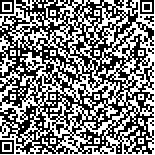王军,刘碧博,郭倩玉,等.多导睡眠监测脑瘫儿童与健康儿童睡眠结构的对比分析[J].中华物理医学与康复杂志,2022,44(2):143-147
扫码阅读全文

|
| 多导睡眠监测脑瘫儿童与健康儿童睡眠结构的对比分析 |
|
| |
| DOI:10.3760/cma.j.issn.0254-1424.2022.02.010 |
| 中文关键词: 脑性瘫痪 儿童 多导睡眠监测 睡眠结构 |
| 英文关键词: Cerebral palsy Children Polysomnography Sleep structure |
| 基金项目:河南省科技厅重点研发与推广专项(202102310359) |
|
| 摘要点击次数: 4262 |
| 全文下载次数: 6516 |
| 中文摘要: |
| 目的 通过多导睡眠监测(PSG)比较脑瘫儿童与健康儿童、不同严重程度和不同临床分型脑瘫儿童睡眠结构差异。 方法 选取2019年7月至2021年5月期间在我院就诊的1~15岁脑瘫儿童56例并纳入观察组,同期选取健康儿童30例纳入对照组。对上述2组儿童进行整夜PSG监测,比较其睡眠结构差异并分析原因。 结果 入选脑瘫儿童睡眠障碍发生率(55.4%)明显高于健康儿童(20.0%),组间差异具有统计学意义(P<0.05);脑瘫儿童睡眠潜伏期[(39.63±26.35)min]较健康儿童[7.25(2.50,19.75)min]明显增加,快眼动睡眠(REM)时间[(97.58±38.52)min]及百分比[(18.48±6.35)%]较健康儿童明显减少,组间差异均具有统计学意义(P<0.05);重度脑瘫患儿总睡眠时间[(458.47±95.62)min]、睡眠效率[(74.26±13.63)%]、快眼动睡眠(REM)时间[(68.90±42.70)min]及百分比[(13.87±7.12)%]均不及轻、中度脑瘫患儿,入睡后清醒时间[51.00(38.50,174.50)min]较轻、中度脑瘫患儿明显增加,组间差异具有统计学意义(P<0.05);不随意运动型脑瘫患儿快眼动睡眠(REM)时间[(76.75±41.37)min]及百分比[(14.46±6.95)%]均不及痉挛型脑瘫患儿,组间差异均具有统计学意义(P<0.05)。 结论 脑瘫儿童睡眠障碍发生率明显高于健康儿童,其睡眠障碍以入睡困难、REM期睡眠缩短为主,并以重度脑瘫和不随意运动型脑瘫患儿睡眠问题较严重。 |
| 英文摘要: |
| Objective To compare the differences in sleep structure between healthy children and children with cerebral palsy (CP) using polysomnography (PSG). Methods Fifty-six children aged 1-15 hospitalized for cerebral palsy formed the experimental group, while 30 healthy children served as controls. Both groups were given 24-hour PSG, and their sleep structures were compared and analyzed. Results The incidence of sleep disorders in the children with cerebral palsy (55.4%) was significantly higher than among the healthy children (20.0%). The average sleep latency was significantly higher than among the healthy children, while the duration and the percentage of the rapid eye movement (REM) stage were significantly lower than among the healthy children. Total sleep time [(458.47±95.62)min], sleep efficiency [(74.26±13.63)%], duration of REM [(68.90±42.70)min] and REM percentage [(13.87±7.12)%] were all significantly lower for the children with severe cerebral palsy than for those with mild or moderate disorder. Their time to wake up after falling asleep was significantly longer. Moreover, the duration of REM and the REM percentage of children with dyskinetic cerebral palsy were significantly lower than for those with spastic cerebral palsy. Conclusions The incidence of sleep disorders among children with cerebral palsy is higher than among healthy children. They have more difficulty in falling asleep and have a shorter REM stage. Children with severe cerebral palsy and involuntary cerebral palsy have more sleep problems. |
|
查看全文
查看/发表评论 下载PDF阅读器 |
| 关闭 |